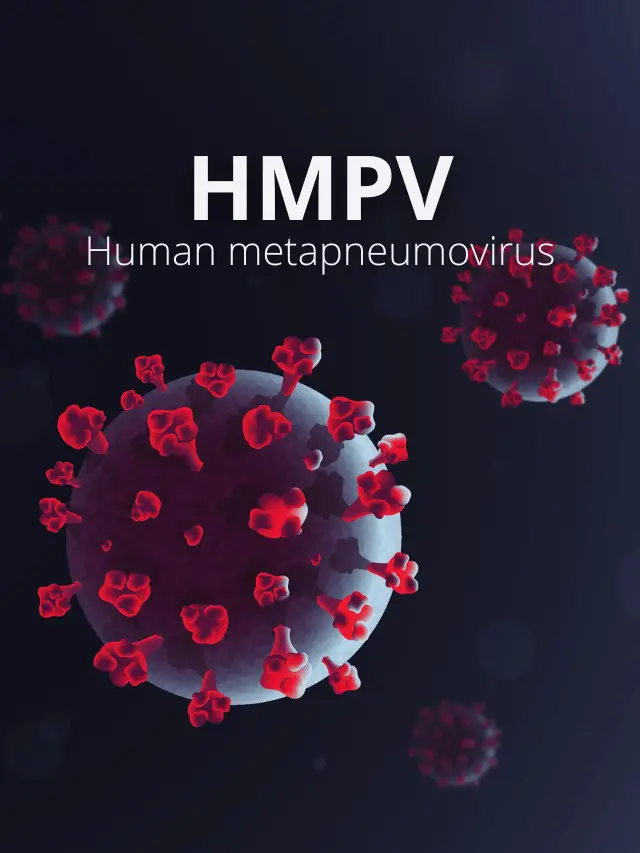Definition of Nano Technology
Nano Technology refers to the manipulation and control of matter at the atomic, molecular, and supramolecular levels. Typically, it deals with structures sized between 1 and 100 nanometers. At this scale, materials exhibit unique properties that differ significantly from their macroscale counterparts, allowing for innovative applications across various fields, especially in medicine.
History and Development of Nano Technology
The concept of nanotechnology was first introduced by physicist Richard Feynman in his 1959 lecture “There’s Plenty of Room at the Bottom.” However, it wasn’t until the 1980s, with the advent of advanced microscopy techniques like the scanning tunneling microscope (STM) and the atomic force microscope (AFM), that scientists could manipulate atoms and molecules directly. This period marked the beginning of modern nanotechnology research, leading to significant breakthroughs in material science, electronics, and medicine.
Importance and Relevance in Modern Science and Medicine
Nanotechnology has revolutionized various scientific domains by enabling the creation of materials with enhanced properties and new functionalities. In medicine, nanotechnology offers groundbreaking solutions for diagnosis, treatment, and prevention of diseases. Its ability to operate at the same scale as biological processes makes it particularly suited for medical applications, promising to transform healthcare delivery and improve patient outcomes.
Technical Specifications
Fundamental Principles of Nano Technology
Nanotechnology operates on the principles of quantum mechanics and molecular biology. At the nanoscale, materials exhibit quantum effects that influence their electrical, optical, and mechanical properties. Understanding these principles is crucial for designing nanomaterials and nanodevices with desired functionalities.
Nanomaterials and Their Properties
Nanomaterials include nanoparticles, nanotubes, nanowires, and nanofilms. These materials have unique properties such as increased surface area, enhanced reactivity, and quantum confinement effects. For example, gold nanoparticles exhibit different optical properties compared to bulk gold, making them useful in medical imaging and diagnostics.
Nanodevices and Nanosystems
Nanodevices, such as nanosensors and nanorobots, are engineered at the nanoscale to perform specific functions. These devices can be used for targeted drug delivery, real-time disease monitoring, and even performing surgeries at the cellular level. Nanosystems integrate multiple nanodevices to create complex functionalities for advanced medical applications.
Techniques and Tools in Nanotechnology Research
Research in nanotechnology relies on sophisticated tools like electron microscopes, atomic force microscopes, and nanoparticle synthesizers. These tools enable scientists to visualize, manipulate, and characterize nanomaterials, facilitating the development of new applications in medicine and other fields.
Applications in Medicine
Drug Delivery Systems
Targeted Drug Delivery
Nanotechnology enables the development of drug delivery systems that can precisely target diseased cells, reducing damage to healthy tissues. For instance, liposomes and dendrimers can be engineered to deliver chemotherapy drugs directly to cancer cells, minimizing side effects and improving treatment efficacy.
Controlled Release Mechanisms
Nanocarriers can be designed to release drugs in a controlled manner, ensuring a steady therapeutic concentration over time. This approach enhances the effectiveness of treatments for chronic diseases, where maintaining consistent drug levels is crucial.
Diagnostic Tools
Nano-biosensors
Nano-biosensors are highly sensitive devices that can detect biomarkers at extremely low concentrations, enabling early diagnosis of diseases such as cancer and infectious diseases. These sensors use nanomaterials like carbon nanotubes and graphene to achieve high sensitivity and specificity.
Imaging Techniques
Nanotechnology has enhanced imaging techniques, making them more accurate and less invasive. Quantum dots, for instance, are used in fluorescence imaging to provide detailed visualization of biological processes at the molecular level.
Therapeutic Approaches
Cancer Treatment
Nanotechnology offers new strategies for cancer treatment, including the use of nanoparticles to deliver drugs, genes, or heat to tumors. This targeted approach increases the treatment’s effectiveness while minimizing damage to surrounding healthy tissues.
Regenerative Medicine
Nanomaterials are used in regenerative medicine to create scaffolds that support tissue growth and repair. These scaffolds can be designed to mimic the extracellular matrix, promoting the regeneration of tissues such as bone, cartilage, and skin.
Personalized Medicine
Nanotechnology enables the development of personalized medicine by allowing precise control over drug delivery and diagnostics. By tailoring treatments to the individual’s genetic makeup and disease characteristics, nanomedicine can improve treatment outcomes and reduce adverse effects.
Anti-Microbial Treatments
Nanomaterials such as silver nanoparticles have potent antimicrobial properties, making them useful in treating infections and preventing the spread of resistant bacteria. These materials can be incorporated into coatings for medical devices, reducing the risk of infections.
Medical Implants and Prosthetics
Nanotechnology has improved the design and functionality of medical implants and prosthetics. Nanocoatings can enhance the biocompatibility of implants, while nanomaterials can be used to create lightweight, durable prosthetic limbs with improved performance.
Tissue Engineering
Nanomaterials play a crucial role in tissue engineering, where they are used to create scaffolds that support cell growth and tissue formation. These scaffolds can be engineered to provide the necessary mechanical and biochemical cues for tissue regeneration.
Benefits of Nanotechnology in Medicine
Enhanced Efficacy of Treatments
Nanotechnology allows for the development of treatments that are more effective at targeting and treating diseases. By delivering drugs directly to diseased cells, nanomedicine can improve treatment outcomes and reduce side effects.
Reduced Side Effects
Targeted drug delivery systems and controlled release mechanisms minimize the exposure of healthy tissues to therapeutic agents, reducing the risk of side effects and improving patient quality of life.
Precision Medicine
Nanotechnology enables the development of precision medicine, where treatments are tailored to the individual’s genetic makeup and disease characteristics. This approach enhances the effectiveness of treatments and reduces adverse effects.
Early Detection of Diseases
Nano-biosensors and advanced imaging techniques enable the early detection of diseases, allowing for timely intervention and improved treatment outcomes. Early diagnosis is critical for managing diseases like cancer and cardiovascular conditions.
Minimally Invasive Procedures
Nanotechnology has facilitated the development of minimally invasive procedures, reducing recovery times and improving patient outcomes. Nanorobots, for example, can perform surgeries at the cellular level with minimal damage to surrounding tissues.
Cost-Effectiveness
Nanotechnology can reduce healthcare costs by improving the efficiency of treatments and diagnostic tools. Targeted therapies and early detection of diseases can prevent the need for more extensive and expensive treatments down the line.
Challenges and Limitations
Safety Concerns and Toxicity
The safety and toxicity of nanomaterials remain significant concerns. While nanomedicine offers many benefits, the long-term effects of exposure to nanoparticles are not fully understood, necessitating rigorous safety assessments.
Ethical Issues
The use of nanotechnology in medicine raises ethical issues, including privacy concerns related to personalized medicine and the potential for unequal access to advanced treatments. Addressing these ethical considerations is crucial for the responsible development of nanomedicine.
Regulatory Hurdles
Regulating nanomedicine presents challenges due to the unique properties and behaviors of nanomaterials. Existing regulatory frameworks may not be adequate, requiring the development of new guidelines and standards for the approval and monitoring of nanomedical products.
Technical and Manufacturing Challenges
Producing nanomaterials and nanodevices at scale remains a technical challenge. Developing reliable and cost-effective manufacturing processes is essential for the widespread adoption of nanomedicine.
Public Perception and Acceptance
Public understanding and acceptance of nanotechnology are critical for its successful implementation in medicine. Educating the public about the benefits and risks of nanomedicine can help address concerns and build trust in these new technologies.
Latest Innovations in Nanomedicine
Smart Drug Delivery Systems
Recent advancements in smart drug delivery systems involve nanoparticles that can respond to specific stimuli, such as pH changes or temperature, to release drugs at the right time and place. These systems offer greater control over drug administration and improve therapeutic outcomes.
Advanced Diagnostic Nanodevices
New diagnostic nanodevices are being developed to provide real-time monitoring of disease markers. These devices use advanced nanomaterials to achieve high sensitivity and accuracy, enabling early detection and better disease management.
Nanorobots in Surgery
Nanorobots are tiny machines designed to perform surgical tasks at the cellular level. These robots can navigate through the body to target and remove diseased tissues with minimal invasiveness, offering new possibilities for precision surgery.
Nanotechnology in Vaccine Development
Nanotechnology is playing a crucial role in the development of next-generation vaccines. Nanoparticles can be used to deliver antigens and adjuvants more effectively, enhancing the immune response and providing better protection against infectious diseases.
Nano-engineered Biomaterials
Innovations in nano-engineered biomaterials are leading to the development of new materials for medical implants, wound healing, and tissue engineering. These materials are designed to interact with biological systems in specific ways, promoting healing and integration with the body.
Future Prospects of Nanotechnology in Medicine
Predictions for the Next Decade
The next decade is expected to see significant advancements in nanomedicine, with new treatments and diagnostic tools becoming widely available. Continued research and development will lead to more effective and personalized healthcare solutions.
Emerging Trends
Emerging trends in nanomedicine include the use of artificial intelligence and machine learning to design and optimize nanomaterials and nanodevices. These technologies can accelerate the development of new medical applications and improve treatment outcomes.
Potential Breakthroughs
Potential breakthroughs in nanomedicine include the development of universal cancer treatments, advanced regenerative therapies, and more effective vaccines. These innovations have the potential to revolutionize healthcare and improve patient outcomes.
Interdisciplinary Collaborations
The advancement of nanomedicine requires interdisciplinary collaborations between scientists, engineers, clinicians, and regulatory bodies. These collaborations will drive innovation and ensure the safe and effective implementation of nanotechnology in medicine.
Investment and Funding Opportunities
Investment in nanomedicine research and development is crucial for continued progress. Funding opportunities from government agencies, private investors, and industry partnerships will support the growth of this field and the commercialization of new technologies.
Comparative Analysis
Nanotechnology vs. Traditional Medicine
Nanotechnology offers several advantages over traditional medicine, including targeted treatments, reduced side effects, and improved diagnostics. However, it also presents challenges such as safety concerns and higher costs.
Nanomedicine vs. Biomedicine
While both nanomedicine and biomedicine aim to improve healthcare, nanomedicine focuses on the manipulation of materials at the nanoscale to achieve more precise and effective treatments. Biomedicine, on the other hand, encompasses a broader range of biological and medical research.
User Guides or Tutorials
How to Understand Nano Technology Research Papers
Understanding nanotechnology research papers requires familiarity with key concepts and terminology. Readers should focus on the introduction, methods, results, and discussion sections to grasp the study’s objectives, techniques, findings, and implications.
Guide to Common Nano Technology Terms
Common nanotechnology terms include nanoparticles, nanomaterials, quantum dots, nanosensors, and nanorobots. Understanding these terms is essential for comprehending research papers and advancements in the field.
Step-by-Step Explanation of a Nano technology Drug Delivery System
A typical nanotechnology drug delivery system involves the encapsulation of a drug within a nanoparticle, which is then designed to target specific cells or tissues. The nanoparticle can be engineered to release the drug in response to certain stimuli, ensuring precise delivery and optimal therapeutic effects.
FAQ
What is Nano technology?
Nanotechnology is the manipulation of matter at the atomic, molecular, and supramolecular levels, typically below 100 nanometers, to create structures, devices, and systems with unique properties and functions.
How is Nanotechnology Used in Medicine?
In medicine, nanotechnology is used for targeted drug delivery, diagnostic tools, and the development of advanced medical devices. It enables precise treatment and early detection of diseases.
What are the Benefits of Nanotechnology?
Nanotechnology offers benefits such as enhanced efficiency, cost reduction, improved quality of life, and environmental sustainability. It enables innovations across various fields and industries.
Are there any Risks Associated with Nanotechnology?
Risks associated with nanotechnology include potential health and environmental impacts, ethical and social concerns, and regulatory challenges. It is important to address these risks through responsible research and development.
How is Nanotechnology Regulated?
Nanotechnology regulation involves guidelines and standards for the safe handling, use, and disposal of nanomaterials and nanodevices. Regulatory agencies work to ensure the safety and efficacy of nanotechnology applications.
What is the Future of Nano Technology?
The future of nanotechnology includes advancements in medicine, electronics, energy, and environmental applications. Continued research and innovation will drive the development of new nanotechnologies and their integration into everyday life.
Conclusion
Nano Technology is transforming the field of medicine by offering innovative solutions for diagnosis, treatment, and prevention of diseases. Its unique properties and capabilities enable the development of targeted therapies, advanced diagnostic tools, and new medical devices that improve patient outcomes.
The future of nanomedicine holds great promise, with continued advancements expected to revolutionize healthcare. It is essential for researchers, clinicians, and policymakers to collaborate and address the challenges of safety, ethics, and regulation to fully realize the potential of nano technology in medicine. By staying informed and supporting ongoing research, we can contribute to a future where nanomedicine plays a pivotal role in improving health and well-being worldwide.
Stay Ahead with Content Utility—Dive into Our Latest Blog for In-Depth Analysis and Trends!























